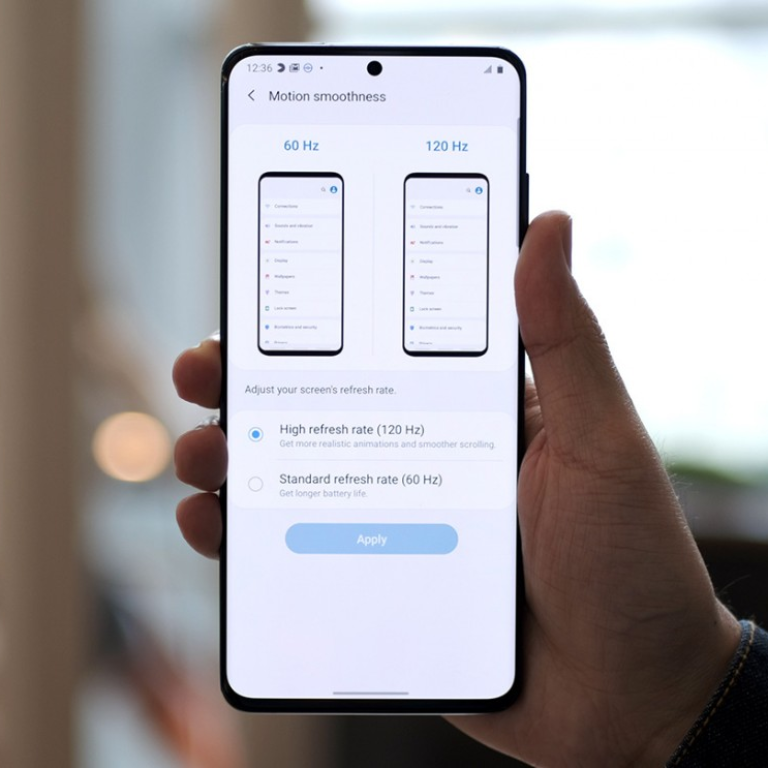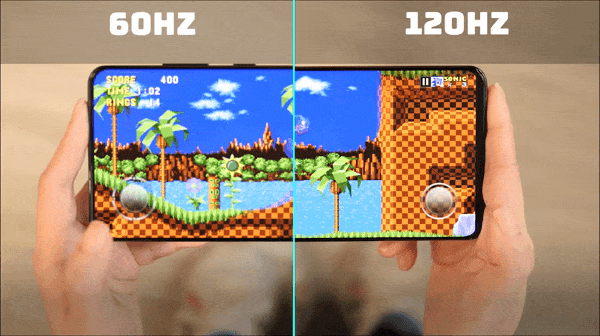
Fancy phones now have higher refresh rates but should you buy one?
Refresh rate measures how often a display updates itself with new images. The higher the refresh rate, the smoother the image on the screen.
The term “refresh rate” doesn't really sound sexy, I know.
Of all the features that can coax people into buying a new phone -- better cameras and a bigger screen, for instance -- it’s hard to get most users to care about how often their display blinks. It’s simply one of those things that’s hard to comprehend without seeing it for yourself.
None of these phones come cheap -- starting at US$1,000, the Samsung Galaxy S20 is one of the priciest Android handsets you can get right now. Some of you might be wondering if it’s worth buying a new phone in 2020 just for a display that refreshes faster.

Let’s first take a moment to recap what refresh rate is exactly.
Movement on a screen can be likened to that in a flipbook. An image updates several times every second, so any movement shown on the screen looks continuous -- just like the animation you see when you rapidly flip through the pages of a flipbook.
A 120Hz display updates 120 times a second. The higher the refresh rate, the more often a display updates itself. As you can see in our illustration above, a higher refresh rate makes for a smoother scrolling experience. In general, your phone will also feel faster because the screen shows responses to your swipes and presses more quickly.
In everyday use, that’s mostly what you’ll get from a high refresh rate screen. But before you throw your arms up, let me ask: Do you play games on your phone?
If the answer is yes, you might get more use out of these high-refresh displays. Games are where you’ll notice the biggest difference, according to Ahmed M. Ahmed, an analyst with research firm IDC. Don’t trust me? Watch our video above.

Ahmed says a higher refresh rate will not only give you smoother visuals, but also reduce what’s known as screen tearing -- when you see images from more than one frame in a single screen. Screen tearing can happen when your video has more frames than your screen can take in a second.
But it’s more than just aesthetics. A study by Nvidia revealed that a better graphics card -- which corresponds to more frames per second (fps) -- improves player performance in Fortnite and PUBG on a PC, regardless of how often they practice.
How Fortnite and PUBG made battle royale the hottest trend in gaming
As Nvidia explains, when your game supports a higher refresh rate, taking advantage of that means you can see movements in the game faster than opponents using a screen with a lower refresh rate. When images appear smoother, it’s also easier to aim and shoot. And when objects look less blurry in a fast-moving scene, it’s easier to understand what’s going on and react accordingly.
“I think the ultra high refresh rate is a significant upgrade for game players,” said Ethan Qi, an analyst at research firm Counterpoint.
You might worry that all the fast refreshing could drain your battery. Experts say with new phones sporting larger batteries and more efficient processors, that shouldn’t be a major concern. But if you want to save power, some phones let you choose to bring up the refresh rate for games and fall back to a lower rate for regular use.
So all things considered, is a high refresh display a must-have this year? Ahmed suggests most people might consider holding out a bit longer.
“It is a nice feature to have, but it is not worth paying the hefty price tag for it,” he said. “As with all new features, it will make its way to more affordable devices soon.”

